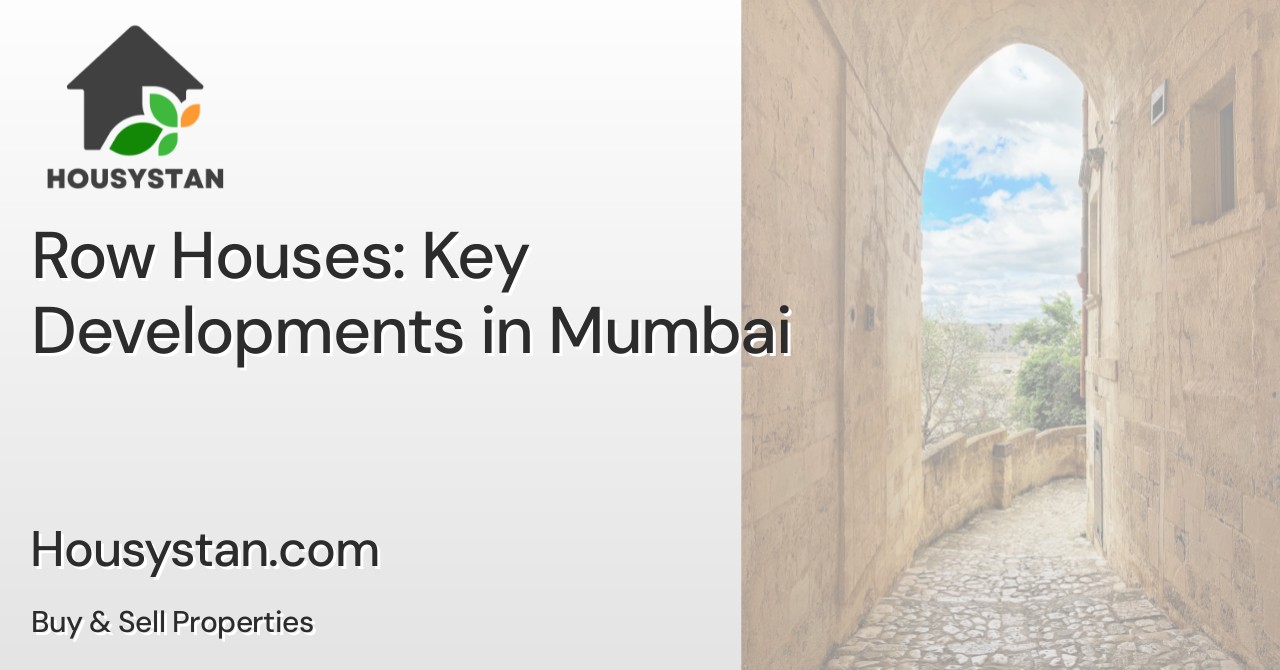Row Houses: Key Developments in Mumbai
Read latest blogs and articles from Housystan

The Information mentioned here was last updated on:
14/12/2025Row Houses: Key Developments in Mumbai
Mumbai, the bustling financial capital of India, is witnessing a remarkable transformation in its real estate landscape, particularly with the rise of row house developments. Strategically located across prime neighborhoods, row houses in Mumbai offer an appealing blend of privacy, community living, and modern amenities. These properties are gaining attention among homebuyers seeking exclusivity without compromising on connectivity and urban conveniences. From Andheri and Bandra to Chembur and Powai, key regions are experiencing a surge in row house projects, driven by increasing demand for premium, low-density residential options.
Row houses in Mumbai are meticulously planned to provide residents with independent living spaces, private gardens, and dedicated parking, while maintaining a sense of camaraderie with like-minded neighbors. Leading developers in the city are focusing on innovative architectural designs, sustainable construction practices, and eco-friendly features to cater to the evolving preferences of urban families. These homes often come equipped with smart security systems, recreational facilities, landscaped parks, and easy access to essential services, making them ideal for both families and professionals seeking a balanced lifestyle.
- Verified Tenants/Buyers
- Unlimited Property Listing
- Zero subscription/charges fee
The appeal of row houses in Mumbai extends beyond their spacious layouts and contemporary finishes. They are often situated in well-connected locations, close to reputed schools, hospitals, shopping hubs, and entertainment zones. This strategic positioning ensures that residents enjoy seamless connectivity to major business districts and transportation networks, enhancing overall convenience. Additionally, the gated community setup provides an added layer of safety and exclusivity, which is highly valued in the metropolitan environment.
Investing in a row house in Mumbai can prove to be a wise decision, as these properties tend to appreciate in value due to their limited availability and growing popularity. Whether you are looking to settle in a peaceful enclave or make a smart real estate investment, exploring the latest row house developments across Mumbai is highly recommended. By choosing a row house in this vibrant city, you can experience the perfect combination of urban sophistication and serene living, tailored to meet the needs of modern homeowners.